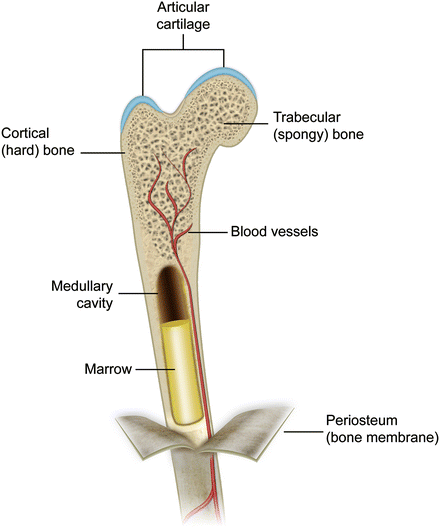Introduction to Osteoporosis

Dr.Rahul Patil.
Biology of bone:
We are born with 300 soft bones. During childhood & adolescence, the cartilage grows & is slowly replaced by hard bone. Some of these bones later fuse together, so that the adult skeleton has 206 bones.
Bones in our body are living tissues. They have their own blood vessels and are made of living cells, which help them grow & to repair themselves. As well, proteins, minerals & vitamins make up the bone.
The major functions of bones are to:
- Provide structural support for the body
- Provide protection to vital organs
- Provide an environment for marrow (where blood cells are produced)
- Act as a storage area for minerals (such as calcium)
Bones are composed of two types of tissue:
- A hard outer layer called cortical (compact) bone, which is strong, dense & tough.
- A spongy inner layer called trabecular (cancellous) bone. This network of trabeculae is lighter & less dense than a compact bone.
Bone is also composed of:
- Bone forming cells (osteoblasts & osteocytes)
- Bone resorbing cells (osteoclasts)
- Nonmineral matrix of collagen & noncollagenous proteins (osteoid)
- Inorganic material salts deposited within the matrix

Fig.1 Biology of bone
Bone cells: Cells in our bones are responsible for bone production, maintenance & modeling.
- Osteoblasts
- Osteocytes
- Osteoclasts
Bone matrix: Osteoid is comprised of type I collagen &noncollagenous proteins.
Definition:
Osteoporosis, which literally means porous bone, is a disease in which the density & quality of bones are reduced. As bones become more porous & fragile, the risk is greatly increased.
The loss occurs silently & progressively. Often there are no symptoms until the first fracture occurs.
It is the most common reason for broken bone among the elderly, commonly referred to as fragility fractures. Bones that commonly break include the vertebrae in the spine, the bones of the forearm & the hip. Bones may weaken to such a degree that a break may occur with minor stress or spontaneously.
Compressed bones in the back (spinal fractures) can lead to loss of height and spinal curvature, while a broken hip often results in both loss of independence and confidence.
Having osteoporosis does not automatically mean that your bones will break; it means that you have a ‘greater risk of fracture’. Thin, fragile bones in themselves are not painful but the broken bones that can result may cause pain and lead to other problems.
However, effective drug treatments, physiotherapy and practical support can reduce the risk of further fractures and speed recovery.

What is Bone density?
Bone density values in individuals can be expressed in relation to a reference population in standard deviation (SD); when compared to the young healthy population, this measurement is referred to as the T- score.
Osteoporosis: T-Score 2.5 SD or more below is called osteoporosis.
Severe osteoporosis: T-Score 2.5 SD or more below in the presence of one or more fragility fractures (T-score d”-2.5 PLUS fracture).
Osteopenia: T-score less than -1 but above -2.5.

Awareness Remains Key
An improved diet, a fall-prevention exercise class, dietary supplements such as vitamin D and calcium, and one or a combination of prescription drugs are far less expensive than treating a potentially debilitating or even fatal fracture.







